
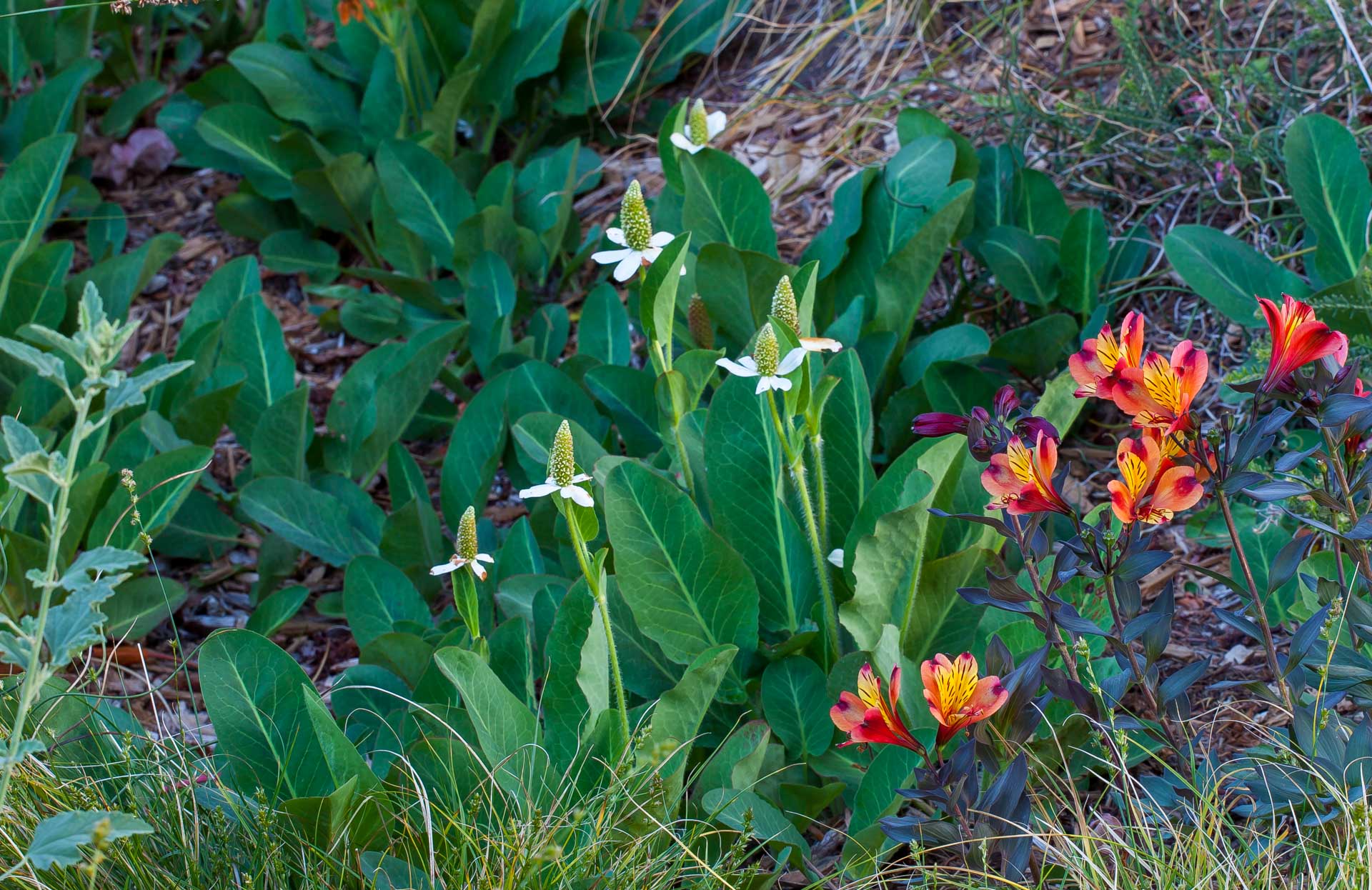
Contributor
- Topics: Archive, Plants You Need, Sustainable Gardening
Fall 2021
Watch the video excerpt of the Pacific Plant People interview here.
Adapted from landscape architects Tom Rau and Marilee Kuhlmann’s answers during a conversation with Saxon Holt for the Pacific Plant People video series. Tom Rau and Marilee Kuhlmann co-founded The Urban Water Group in Los Angeles.
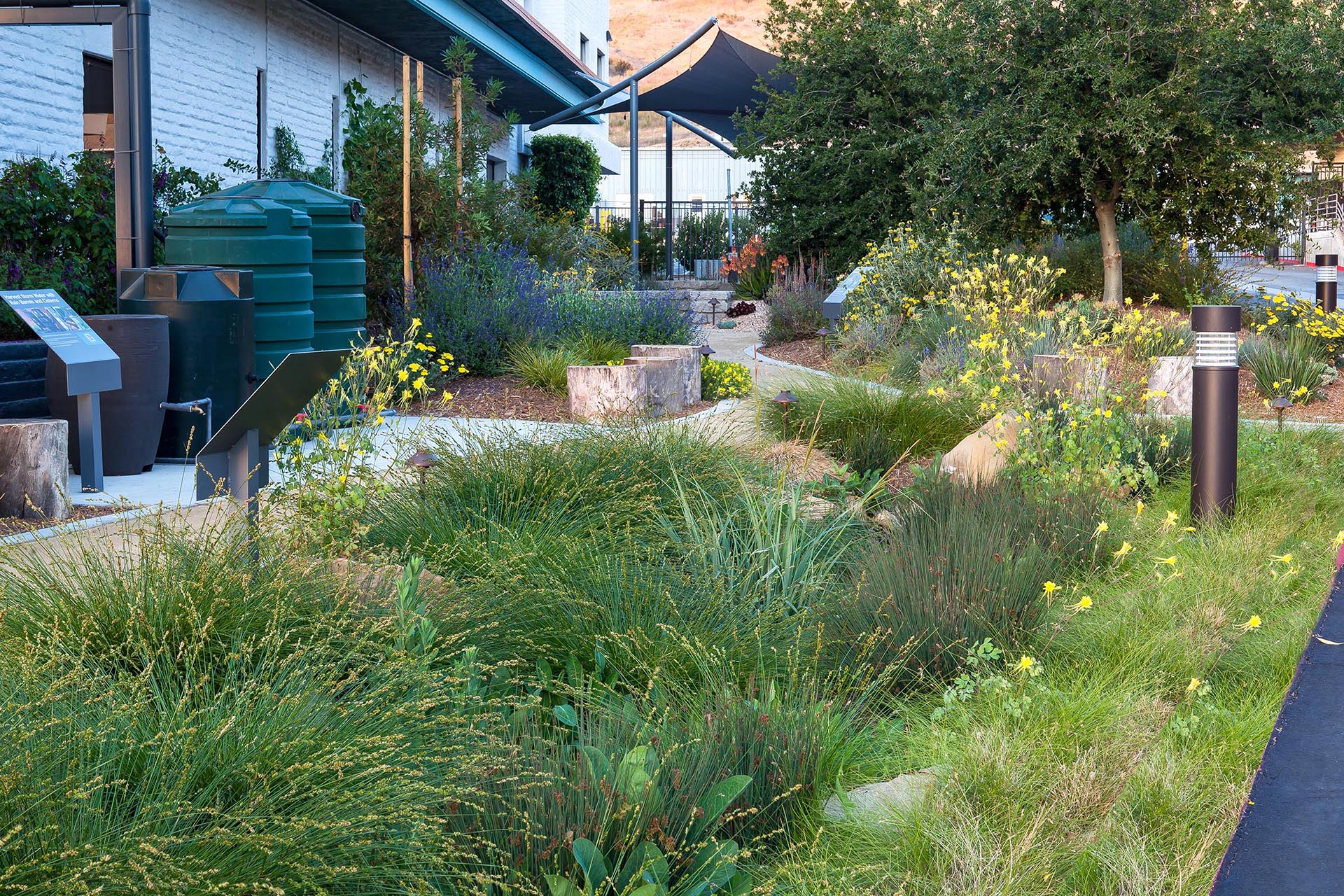
Watershed gardening
- The watershed approach to gardening uses bioswales to redirect water to root systems in a way that promotes drought tolerance and resiliency.
- When designing a resilient garden, it’s important to understand that plants gather nutrients and share resources with one another through their roots, as well as symbiotic fungi connected to roots known as mycorrhizae. This fungal network is called the rhizosphere.
- Root systems and their surrounding rhizosphere are living irrigation systems that move water from wet to dry and play a key role in nutrient availability. Rhizospheres sequester carbon that might otherwise contribute to worsening the effects of climate change.
- Bioswales have three levels. The bottom, covered during a rainstorm, is suitable only for plants that can withstand being submerged in rains and dry in summer. The middle level includes plants that can survive being partly submerged with their crown above the waterline. The uppermost plants can withstand only their roots being submerged after large storms.
- By filling bioswales with water occasionally in summer, roots draw water from below as they would naturally, keeping native plants and their rhizosphere healthy. In fact, overhead irrigation can damage mycorrhizae in the summer.
- Watershed gardening means thinking toward the future, rather than recreating plant communities for climate conditions that no longer exist. The challenge will be in selecting plants that grow well together and can adapt to future conditions while remaining eye-catching.
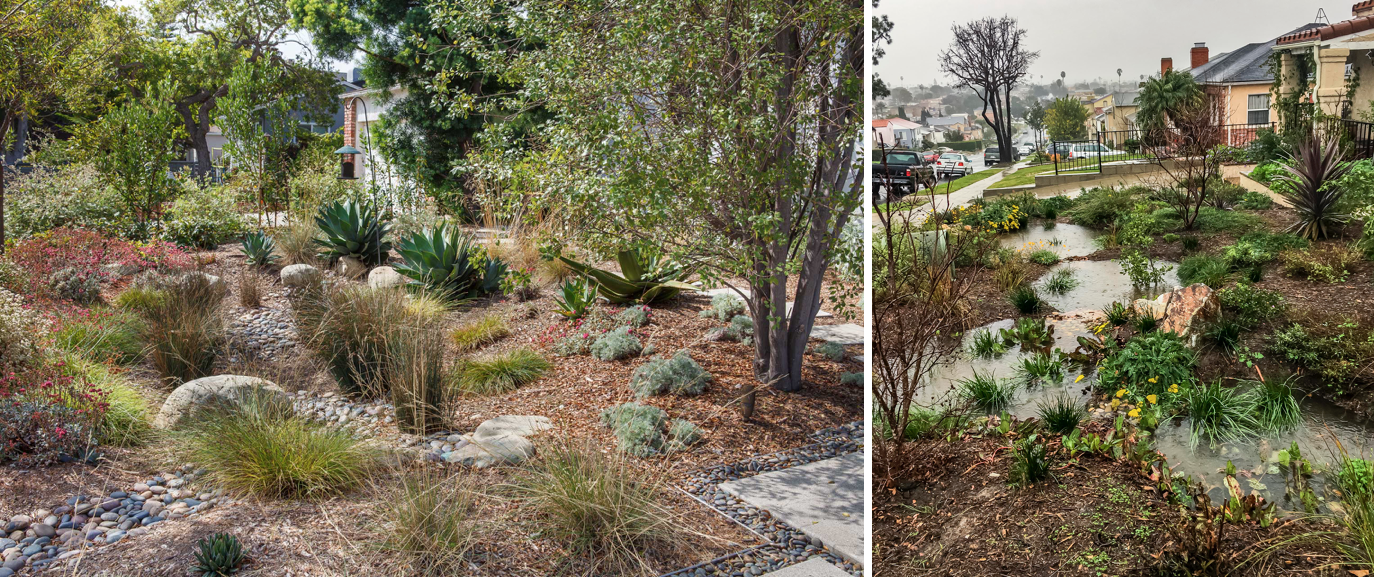
Right: Rain garden in winter. Credit: Urban Water Group
Los Angeles region tips
- Knowing how to redirect and use water is as important as capturing water when planning a garden in this region. Cisterns can capture rainfall that misses the soil and rhizosphere and save that water for future use.
- Soil structure and weather vary greatly in Los Angeles, creating a patchwork of microclimates. This microclimate variance allows gardeners to work with plants from coastal areas, inland areas, chaparral, and woodlands.
- Native plants go dormant in spring and wake up in October, or “California spring,” and this growing cycle determines watering schedules. By mixing evergreen summer-dry plants with Mediterranean species, a garden can shine even when dormant in summer.
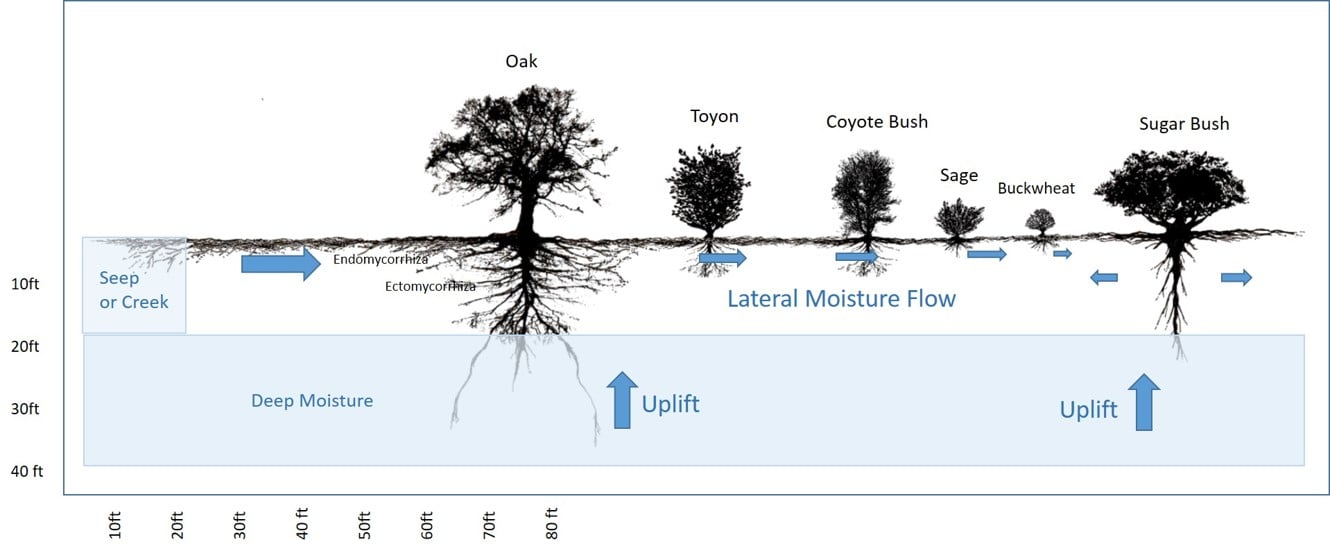

Lower left: Installing cisterns in water-conserving Southern California garden; design Urban Water Group. Credit: Saxon Holt
Lower right: Large stainless steel water cistern collects and stores rain from roof. Credit: Saxon Holt
Trees
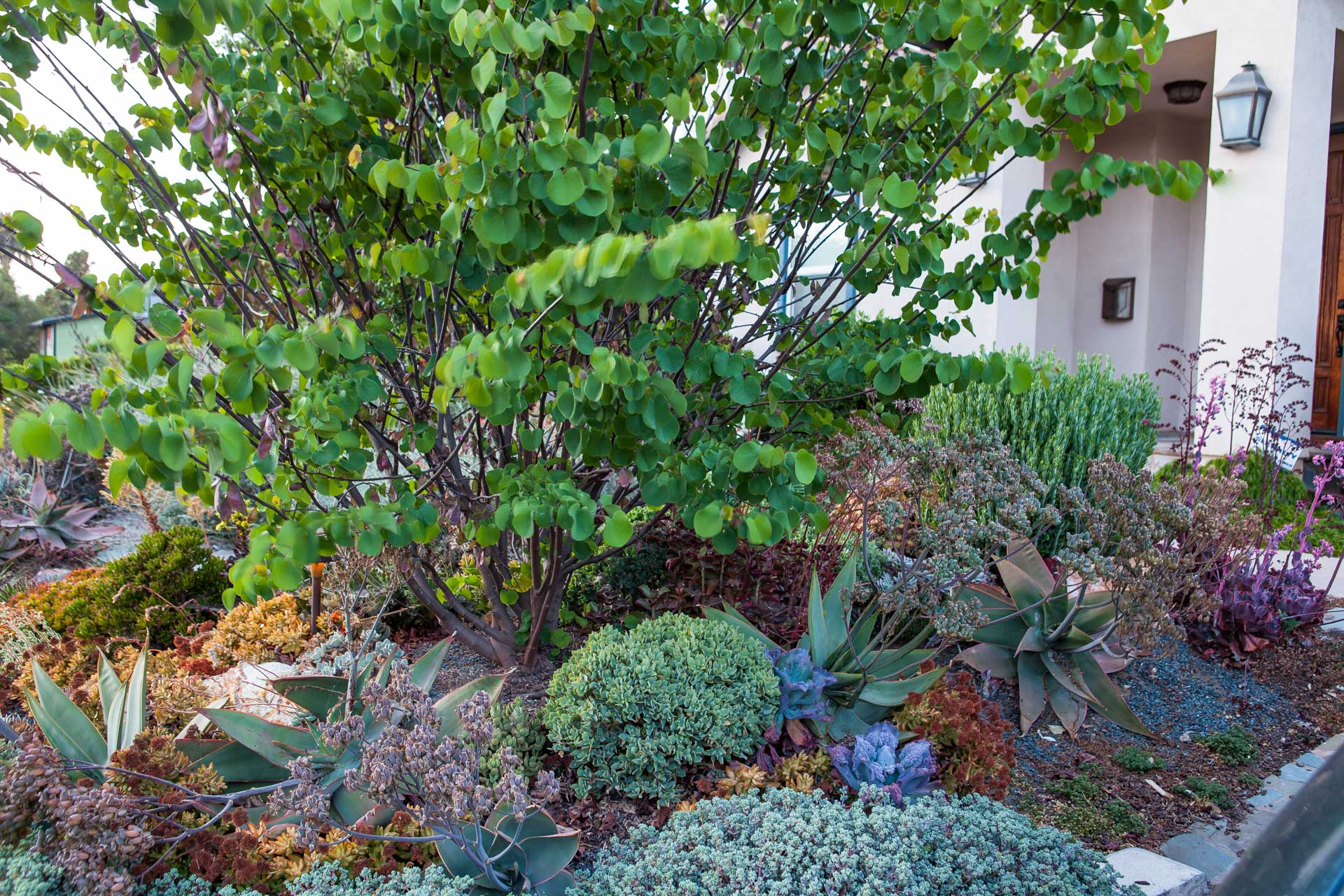
Water tables drop during drought, which is particularly hard on street trees. Gardeners can help trees regain some of their natural resiliency by using cisterns and deep watering.
- Desert willow (Chilopsis linearis) is a deciduous tree that grows 15–20 feet and its tubular flowers attract hummingbirds. Native trees such as desert willow not only save water, but support pollinator biodiversity during stressful dry seasons.
- California redbud (Cercis occidentalis) is another deciduous tree that grows 10–15 feet. If a redbud is growing slowly, give it a soak during the winter and occasionally water in the summer. They do better away from the coast, where there’s hot summers and chilly winters. They also take a while to find their root base.
Sedges, grasses, and rushes
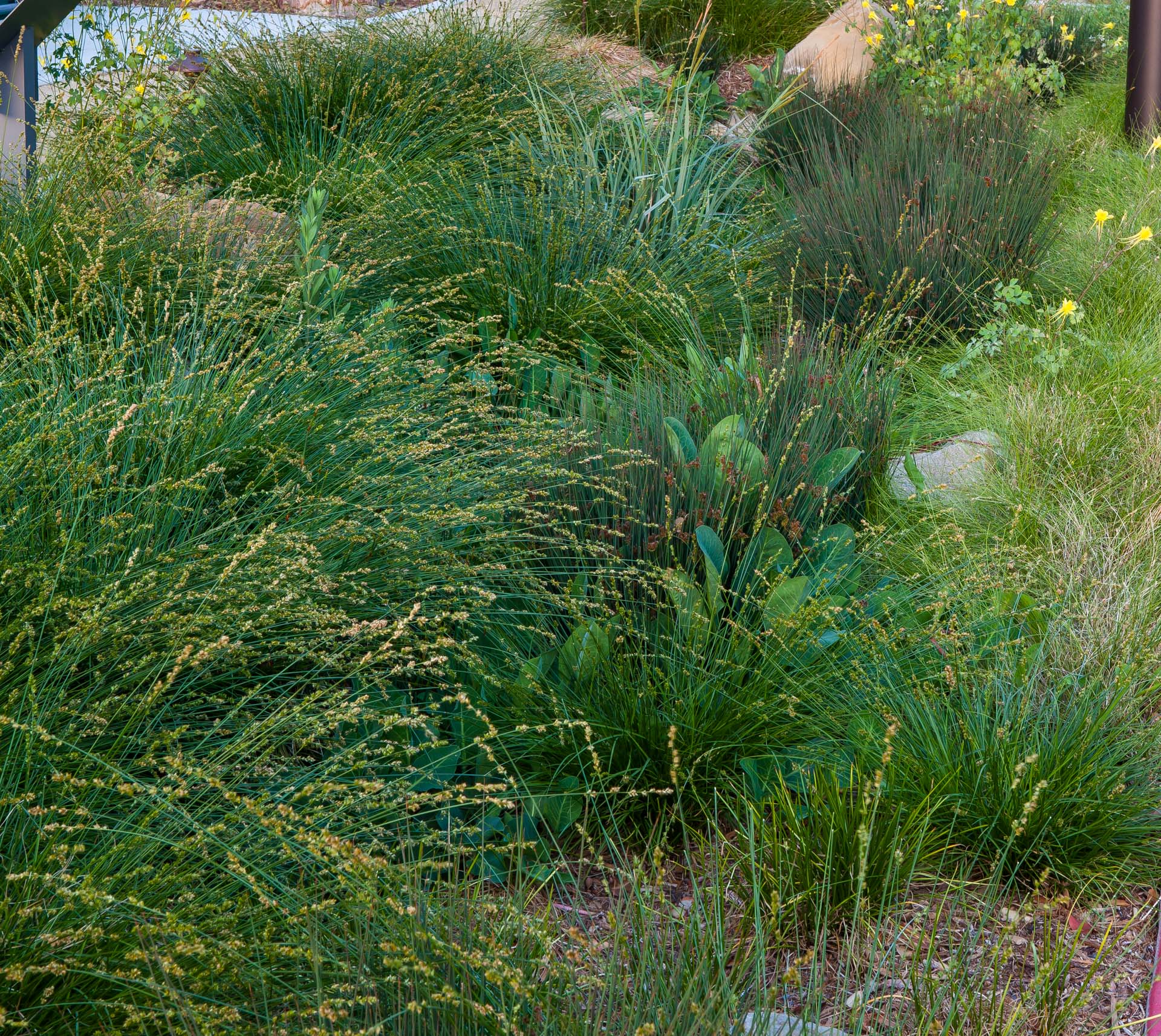
Grasses, sedges, and rushes bring structure and a dense root system to many rain gardens. There are running sedges and bunching sedges, and the growth form that works in a particular bioswale will depend on the turbidity of the water during storms. If the water comes in fast, running sedges and other plants can slow down the water. Otherwise, clumping sedges and rocks can form the bed of a bioswale.
- Tall sedge (Carex appressa) is the tallest sedge used in these examples, but this clumping sedge can be difficult to find.
- San Diego sedge (Carex spissa) is a clumping sedge that does well in both wet and dry conditions and grows up to six feet if tall sedge isn’t available.
- European grey sedge (Carex divulsa) also does well in both wet and dry conditions. This clumping sedge turns brown and goes dormant in summer if not watered, but it greens up again when rains come. When planted in a swale with drip irrigation, this sedge can stay green all year.
- Clustered field sedge (Carex pregraseles) is a running sedge useful for rain gardens that experience high turbidity.
- Sand dune sedge (Carex pansa) is another running sedge that can slow down water during heavy storms.
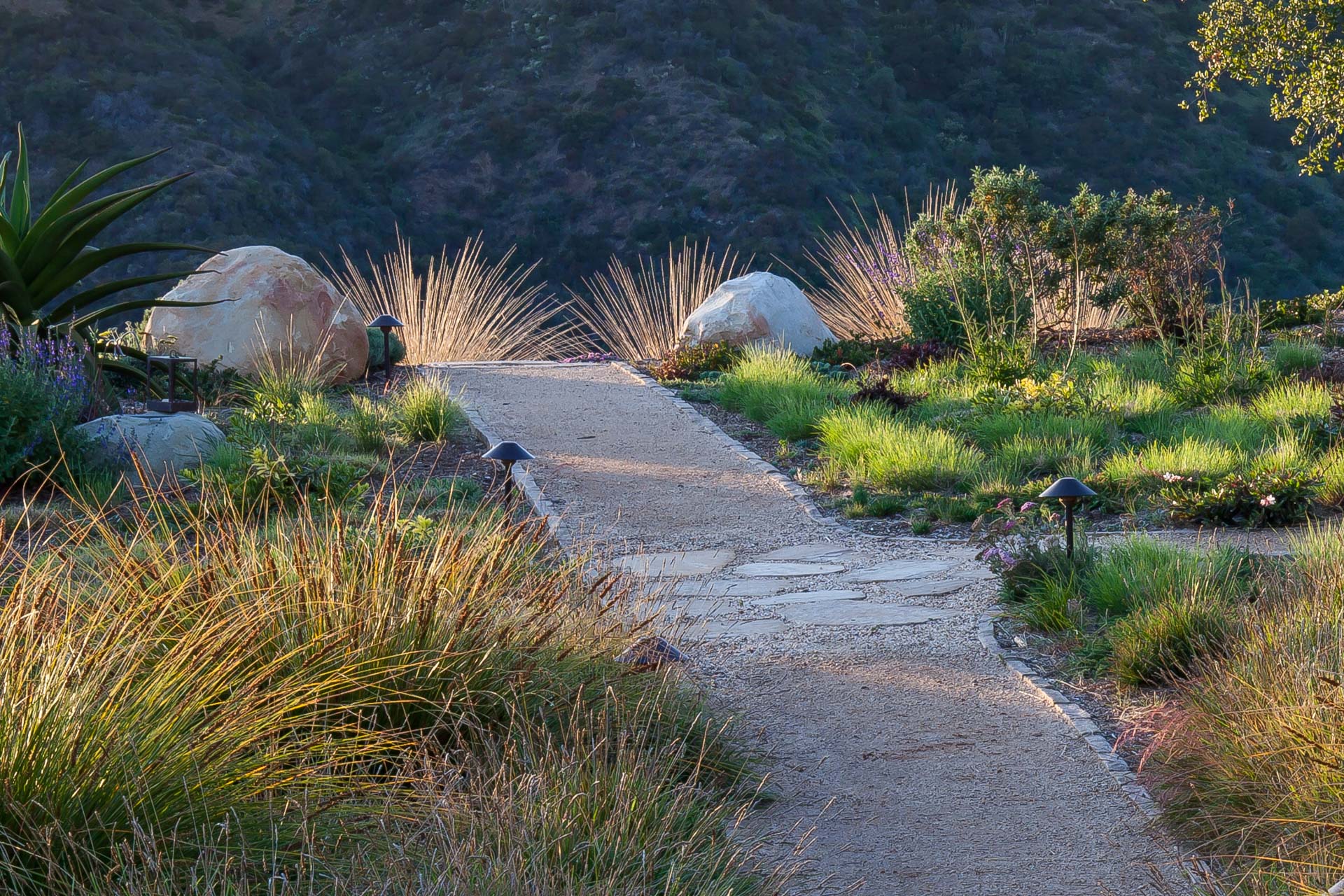
- John Greenlee’s moor grass (Sesleria ‘Greenlee Hybrid’) is an evergreen grass that pairs well with grasses, sedges, or rushes that turn brown or gold in the dry season.
- Muhly grasses (Muhlenbergia ) is another year-round green grass to pair with species that turn brown. Cutting these grasses back contains the wild aesthetic to only the wettest sections of the rain garden.
- El Campo small cape reed (Chondropetalum tectorum ‘El Campo’) tolerates both standing water and dry conditions.
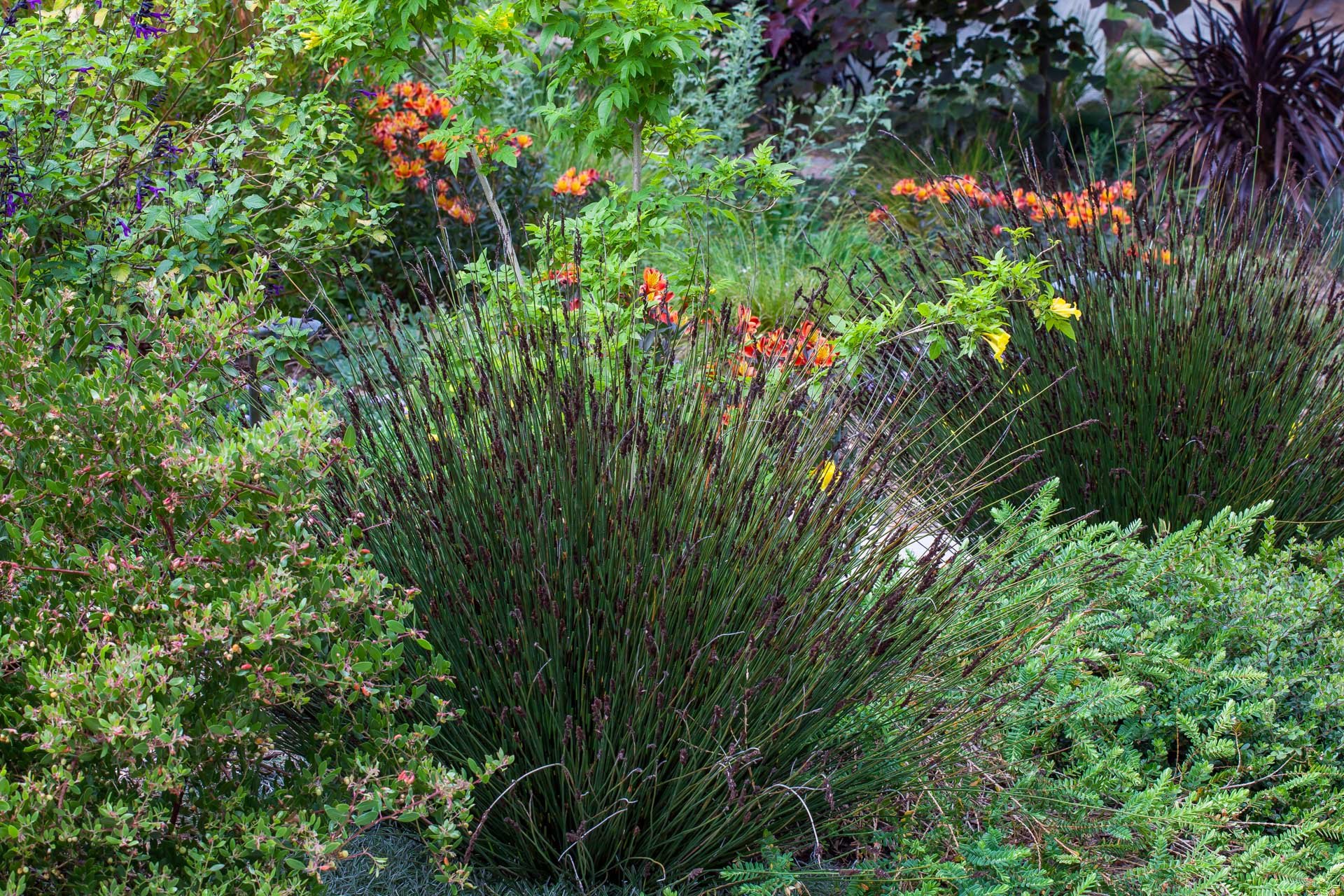
Additional recommendations
- Douglas iris (Iris douglasiana), a native iris, pairs well with grasses, red hot pokers (Kniphofia ) and sages (Salvia spp.). Cultivars of reblooming bearded iris (Iris x germanica ‘Total Recall’ and ‘Ida Red’) do best along the edges to transition from the rain garden to the rest of the garden.
- Yerba mansa (Anemopsis californica) is a bog plant that thrives on the bottom level of a bioswale.
- California goldenrod (Solidago velutina californica) grows well at all levels of a bioswale.
- Summer snow California fuchsia (Epilobium canum ‘Summer Snow’) is a great lowest-level species that can withstand both submerged and dry conditions and will go dormant when dry.
- Columbine (Aquilegia ), while best suited for the uppermost level, will seed all over a rain garden and grow in the conditions it favors.
- Germander sage (Salvia chamaedryoides), including its cultivar ‘Marine Blue,’ can be a great integrator species for gardeners who want one element—deep blue, in this case—to harmonize across the design. Sage pairs well with slow-growing plants, such as manzanitas (Arctostaphylos ), by filling in the gaps as plants grow.

Resources
Calscape California Native Planting Gardening Guide
Greenwood Daylily Gardens is a source for reblooming irises.
Bornstein, Carol, David Fross, and Bart O’Brien. 2005. California Native Plants for the Garden. Los Olivos: Cachuma Press.
Bornstein, Carol, David Fross, and Bart O’Brien. 2011. Reimagining the California Lawn: Water-Conserving Plants, Practices, and Designs. Los Olivos: Cachuma Press.
Dunnet, Nigel. 2019. Naturalistic Planting Design. London: Filbert Press.
Rundel, Philip. 2005. Introduction to the Plant Life of Southern California: Coast to Foothills, illustrations by Robert J. Gustafson. Oakland: University of California Press.
Tallamy, Douglas W. 2020. Nature’s Best Hope: A New Approach to Conservation that Starts in Your Yard. Portland: Timber Press.
West, Claudia and Thomas Rainer. 2015. Planting in a Post-Wild World. Portland: Timber Press.
Share:
Social Media
Garden Futurist Podcast
Most Popular
Videos
Topics
Related Posts
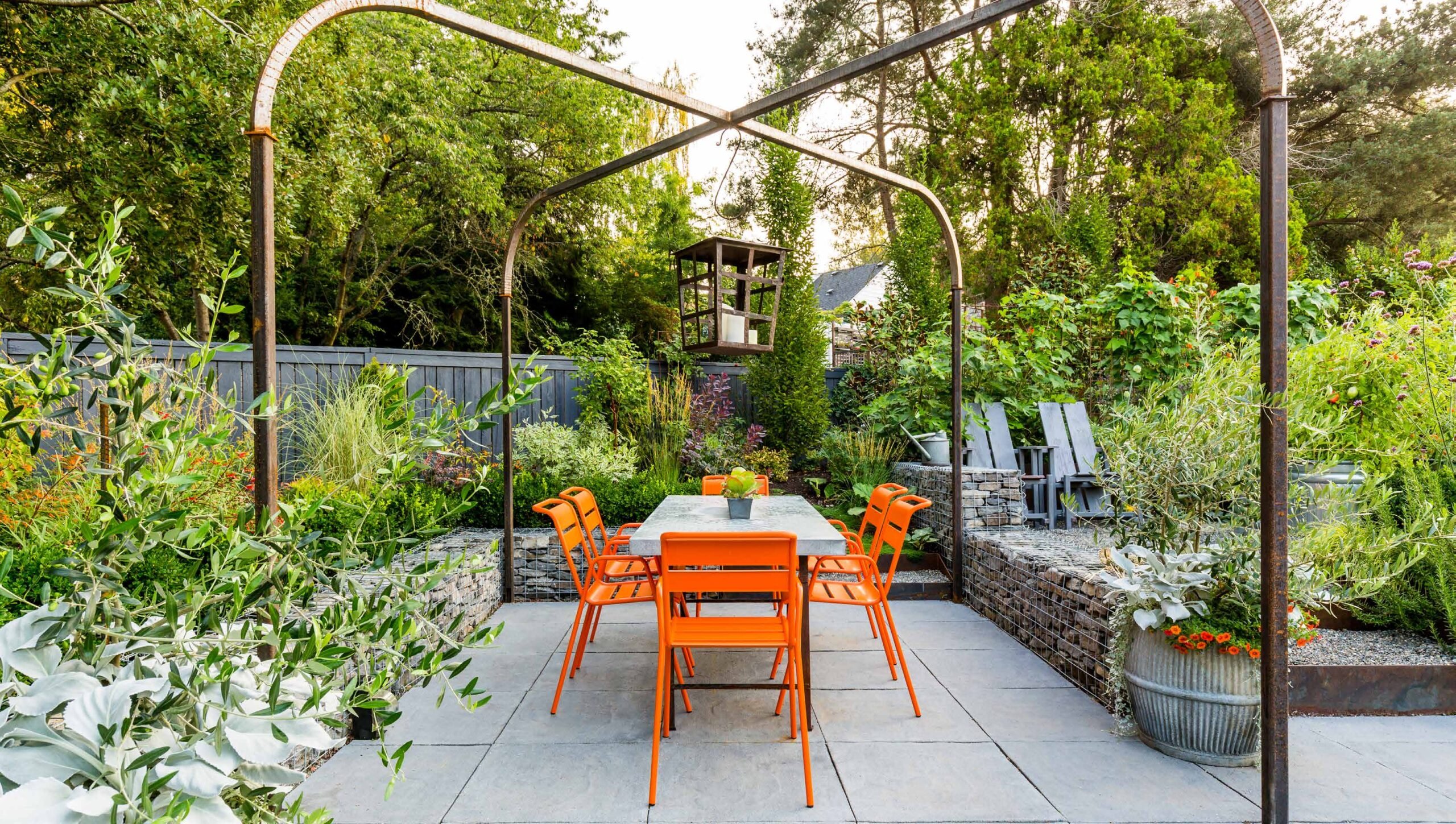
Design Futurist Award Announced: Committee Shares Vision
March 8, 2023 At Pacific Horticulture, we believe that beauty can be defined not only by gorgeous plants and design, but also by how gardens

Ground Up Science for Greener Cities with Garden Futurist Dr. Alessandro Ossola
Spring 2023 Listen to the Podcast here. Alessandro Ossola is a scientist who gets very excited about the challenge of climate change allowing for an

Readying Urban Forests for Climate Realities with Garden Futurist Dr. Greg McPherson
Winter 2023 Listen to the Podcast here. “Going from the mow and blow to a more horticulturally knowledgeable approach to maintaining the landscape. And that
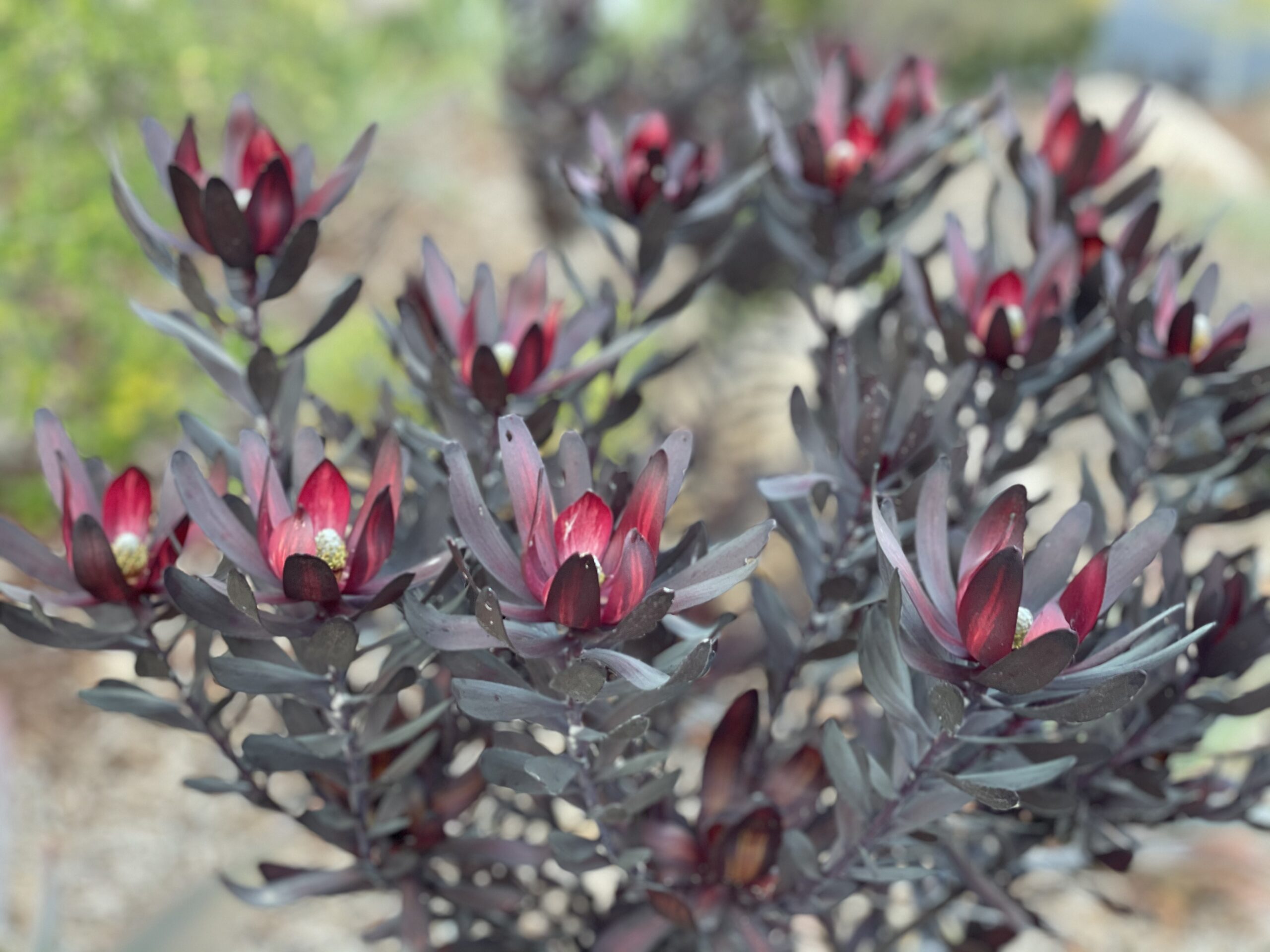
Expand Your Palette: Waterwise Plants for your Landscape
There’s nothing more thrilling to plant lovers than discovering new plants to test in the garden. Here in the southernmost corner of California, we have








Responses